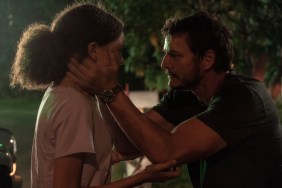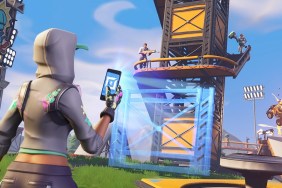Even ancient Chinese people have Internet.
Following the slippery footsteps of the PS2 versions of Silent Hill: Origins and Grand Theft Auto: Liberty City Stories, Dynasty Warriors: Strikeforce for the console sits in the unenviable position of being a port from a handheld. The assumption that these ports are just a quick cash-in with passably updated graphics is rarely challenged, and with the PSP version of Strikeforce not fairing well, it doesn’t seem as though the console version is going to change our minds. But it has one undeniable trump card over its platform brethren: online multiplayer.
[image1]At this point in the Dynasty Warriors series, first released as a traditional fighting game in 1997 and then as the proverbial hack’n’slash title since then for what feels like a dynasty (yes, deal with it), no one should find Strikeforce terribly surprising. You take an armored dude (or scantily armored gal) from ancient China who’s mad about not having enough meat buns in his dim sum cart and needs to whack hundreds of soldiers with a pointy stick until the sadistic pleasure makes him forget that he’s committing mass murder. Apparently, there are way too many Chinese people… no matter the time period.
Let’s be honest, though. If you’re reading this, Dynasty Warriors is mostly likely your guilty pleasure, a blemish that would make any hardcore gamer question your tastes and masochism. But you don’t care. You revel in the death screams of the fallen, swinging, jumping, and unleashing fury in deadly combinations. All you need is a health bar, some musuo, a justified reason for war, and an overdramatic cast of heroes and villians who don’t look at all like actual Chinese officers in 169 A.D. (No Chinese person should be able to grow a beard like some of them do… trust me, I’ve tried.) This is trashy Chinese fantasy gaming at its best, and oh, do you like playing dirty.
And Koei knows it. They know you love building your musuo gauge to its peak, then feigning weakness by letting a squad of callow recruits surround you, and finally tearing through them all in a beastly furor of energy special effects, battle cries, and corpses. If the image of manly fireworks coupled with overblown violence makes you gleefully conjure up the likes of Dragonball Z, then Fury Mode should grab your attention (by the Dragonballs). When characters fill their Hyperbreak Gauge, which works exactly like the past Musuo Gauge, they now turn into a Super Saiyan spiky-haired, glowy-eyed, aura-bursting warrior who can demolish everything on the battle and can’t be knocked down.
[image2]But Strikeforce doesn’t adhere completely to the traditional Dynasty Warriors title and takes a swing at a design closer to Monster Hunter. To ensure that the online servers can handle up to four players at a time and that the game runs without a hitch, maps are divided into bite-sized chunks that are numerically labeled. Every mission has a clear goal and usually doesn’t last for more than fifteen minutes. Items can be used on the fly from your bag, orbs and chi skills can enhance your character’s abilities, and weapons can be crafted, strengthened, and swapped in battle between your main and sub weapons.
You can even lead up to three other characters in a squad, which is especially helpful for any particularly dangerous missions. Most officers and advisors have been turned into officer cards that can activate a special effect in a particular area and upgrade your city’s facilities after each mission (more on that later), but a few of them have enough courage to join you in battle. Having squadmates splits the experience you earn between them, but they level up just as you do.
Similar to the Empires offshoot in the series, enemies now drop loot primarily in the form of resources, like Bamboo, Short Iron Shards, and Moonstones. As you might expect, purchasing special weapons and items usually means needing a certain amount of resources first. The same goes for improving your city’s facilities, such as the market, blacksmith, exchange house, academy, workshop, and storehouse – all of which are greatly enhanced in stock and size which each upgrade. Of course, this kind of resource system will frequently tick you off when you don’t have that one damn item, but every mission has a clear item as a reward (and another for completing a bonus objective), so some items aren’t difficult to find.
[image3]Whereas the PSP version of Strikeforce only supports at ad-hoc co-op for up to four players, the console version takes advantage of Xbox Live and Playstation Network for full online support. After creating a multiplayer online city, you can invite friends as squadmates, or you can search for open public cities to join. It’s a simple system, but nothing more is necessary. Aside from teaming up together, you can also trade items and friends swap your officers with your friends for a while and have them level up while in their care.
Beyond the mandatory graphical touchups, the success of Dynasty Warriors: Strikeforce rests on the strength of its online multiplayer. Any true fan of the series has been waiting for it. If the multiplayer doesn’t catch on, not only will it turn Strikeforce into "just another" Dynasty Warriors title, but it won’t bode well for the already announced sequel Dynasty Warriors: Strikeforce 2 for the PSP. Let’s hope that doesn’t happen. Dynasty Warriors: Strikeforce for Xbox 360 and PS3 rallies into stores February 16, 2010.







